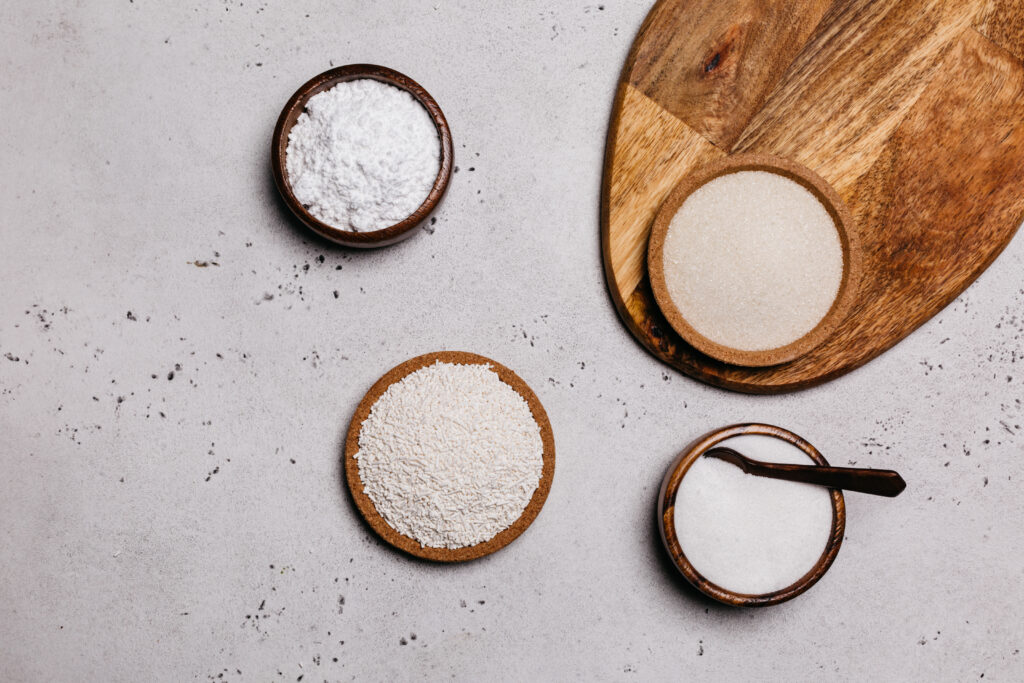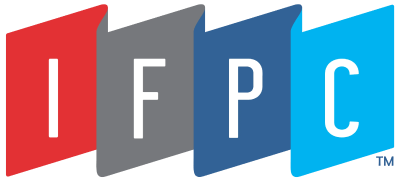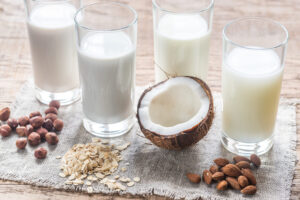
Today, consumers are looking for “clean ingredients” they can trust.
As consumers actively look for products with natural ingredients, there is a push for full transparency expected from the manufacturer. However, the ingredient label on the back of a package is not enough.
According to recent research by Innova Market Insights as of April 2025, food and beverage launch trends in the U.S. and Canada show that over one-third of launches have a clean label claim, no additives/preserves as the top claim followed by non-GMO or GMO-free, organic, ethical regarding the environment, and natural (Clean label food in the US & Canada). This is just a glimpse at what food and beverage manufacturers are doing to proactively appeal to their customers, as “clean ingredients” become the new norm.
What is a Clean Label Ingredient?
Industry experts throw around the term, “clean label,” but what products are on this list?
IFPC’s Senior Director of Business Development, John Browning, reflects on this buzzy concept by addressing that it is not something entirely new to the industry.
“Every vendor has a different definition of what determines clean label ingredients. The industry standard is like a ‘grandma’s pantry,’ clean label ingredients that are basic and without a chemical connotation such as flour, honey, and sugar,” said Browning. He also adds, there is still an unclear FDA stance on clean labels and natural ingredients, so it is a little loose across the industry.
Industry Standards and Lists
Although clean label is trending as the new buzzword, it is not exactly a new concept. Manufacturing brands have been highlighting “bad” ingredients for years, especially among food and beverage industry experts.
One of the first pioneers to establish standards in the food industry was the Whole Foods Market in 1980. According to their Food Ingredients Quality Standards page on their website, Whole Foods Market (2025) has managed to ban 300+ ingredients storewide, including hydrogenated fats, high-fructose corn syrup, artificial sweeteners, and more.
Although the Whole Foods brand was built on high food ingredient standards, some brands are showing their own definition of clean label products today. Just recently, Sam’s Club’s reminded consumers about their updated “Made Without” list of 38 ingredients not found in their store brand food and beverages. According to Editor-in-Chief of Food Processing Magazine, Dave Fusaro, the list was originally created in 2022 and updated a few times since communicated to key Sam’s Club suppliers and contract manufactures, aiming to achieve only “clean” ingredients usage by the end of 2025. The list includes artificial colors, high-fructose corn syrup, and “is grounded in member insights and evolving dietary preferences,” according to Sam’s Club (Fusaro, 2025).
With the ongoing release of “Bad Ingredients” lists, these brands are setting a standard for all retailers in the food and beverage industry.
IFPC's Approach to Clean Label Ingredients
As your trusted ingredient concierge, IFPC’s strategy is to support our vendors and brands with varying views on clean label ingredients.
“Minimally processed means different things to different people from a manufacturer of ingredient standpoint,” said Browning. For example, Browning mentioned that IFPC vendors, such as Ingredion, have been producing functional and clean label starches that have been set up for 30 years and still gain traction today. As IFPC is working with customers to help them navigate their standards of clean label ingredients.
IFPC’s Minimally Processed Recommendations:
- Acidulants
- Sweeteners: Sugar, Honey, Molasses
- Cocoa Powder
- Vitamins
- Texturizers: Native Starches, Functional Native Starches, Functional Flour, Ingredient Systems
- Dairy Proteins
- Plant Proteins
- Vinegar
- Sea Salt
- Lecithin
- Fats & Oils
- Soy Oil
- Frying Oil
- Lard
Consumer Demand for Transparency
After all these years of consumers using everyday products with just an ingredient label on the back, why are people seeking transparency now?
According to Innova Market Insights (2025), about three-quarters of consumers report that they have reconsidered what they are buying because of the ingredient list and choosing products with fewer artificial ingredients (Clean label food in the U.S. & Canada). Director of Market Development for Texture, Health & Nutrition at IFPC, Michelle Kozora, said that consumers are looking for “real” ingredients.
“People want to understand what they’re consuming and feeding their families—and feel confident talking about it. When labels include unfamiliar or mysterious ingredients, it can create confusion, especially if the connection to nature isn’t clear. By using ingredients that feel more recognizable and relatable, we can help consumers feel like they have more transparency and trust in the food they eat,” said Kozora.
Storytelling packaging is the new norm, and consumers want a brand they can trust and see its impact on their own life. Brands are additionally going beyond using “added-value messaging” on their packaging. Innova Market Insight (2025), states value can be found in developing a coherent narrative around the quality of an ingredient by highlighting in a short paragraph with claims of a strong positive impact on lifestyle (Adding quality to the fiber platform).
While consumers seek transparency in food labeling, food manufacturers continue to target the tastes of different generations using package messaging. According to Innova Market Insights (2025), Gen X & Boomers are targeted by messages related to fresh and natural, while Gen Z & Millennials are more image conscious and influenced by branding and packaging (Global: Average of 11 countries).
Future Trends & Innovations
Clean labels are here to stay. IFPC has been finding ways to help customers innovate their product solutions since its inception and plans to continue to evolve as “clean label” evolves in the industry.
In the Top Food Trends 2025 report by Innova Market Insights (2025), the #1 trend in food is still “Ingredients and Beyond,” which prioritizes a combination of price, freshness, nutrition, and health to the consumer. Browning said that whether a brand is looking to switch to plant-based or dairy proteins, he encourages them to come to IFPC for these requests. “We’ve been doing this for a while, but we continue to broaden our reach into clean label ingredients more aggressively and would love the opportunity to help our customers navigate this space,” said Browning.
It can be a challenge to ‘clean up’ an ingredient label to meet the latest standards, but IFPC’s team of food scientists, the Ingredient Technology and Applications team (IT&A) are well versed in the ins and outs of making custom clean label blends. IT&A offers application support, working hand in hand with customers to find the balance of interconnected ingredients to reach the ideal flavor and texture. Additionally, IFPC’s scientists work as an extension of the customer’s R&D department, using industry knowledge and experience to make ingredient recommendations and streamline the product development process.
Conclusion
As FDA regulation standards are still uncertain, IFPC is actively working to partner with customers to offer ingredient solutions and replacements as they work to create their own clean label products.
Our core commodity ingredients and specialty ingredient programs offer a broad portfolio of single source ingredients from our trusted suppliers, and our manufactured systems can be customized to meet each customer’s specific needs. IFPC offers high-quality ingredients and ingredient systems as consumer demand continues to grow for clean label ingredients.
Sources:
Whole Foods Market. (2025). Food ingredient standards. https://www.wholefoodsmarket.com/quality-standards/food-ingredient-standards
Fusaro, D. (2025, June 13). Sam’s Club’s 39 ‘Made Without’ ingredients, and how it’s achieving them. Food Processing. https://www.foodprocessing.com/business-of-food-beverage/business-strategies/news/55297158/sams-clubs-made-without-ingredients-and-how-its-achieving-them
Innova Market Insights. (2025 April 30). Clean label food in the US & Canada. ttps://www.innovamarketinsights.com/trends/clean-label-food-in-the-us-canada
Innova Market Insights. (2025). Innova Trends Survey 2025 (Global: Average of 11 countries). Innova Database.
Innova Market Insights. (2025). Adding quality to the fiber platform. Innova Database.
Innova Market Insights. (2025 April). Top food trends 2025 in the US and Canada. Innova Database.



